Some projects are just kinda wonky from the start. Take the Tower of Pisa—yes, the leaning one—for example. When the project’s builders started working on the third floor, they realized the structure was starting to look distinctly wonky. They spent the next 170 years trying to correct the lean, but to no avail, as literally millions of Instagram posts will tell you.
The problems with the Leaning Tower of Pisa began before the first brick was even laid. The tower was situated on unstable, sandy ground, into which the foundations sank. The builders tried to build the floors on the sinking side higher, to correct the aesthetics, but the extra weight made the tower sink more, exaggerating the lean further. Worst. Planning. Ever.
There’s a lesson here for event professionals.
We’re definitely not saying that you should spend 170 years planning your next event. But we are saying that the true success of an event is determined by the quality and depth of the preparation that goes into it. Neglect to lay the right foundations and you’ll have the event equivalent of the Tower of Pisa on your hands, along with cringey Instagram posts.
Luckily, there are some companies out there simply crushing event preparation. We’ve brought together lessons from the frontline, as well as expert input from the team here at Swoogo, to help you create a strong pre-event plan. May the (pre-) games begin!
Great event planning takes two things: time and creativity. But just how much time should you allocate to planning an event? The Swoogo team has a rough rule of thumb based on an event’s size, which we break out into tiers:
Tier 1 | For large marquee events of 1,000+ attendees, start planning 1+ year out
Tier 2 | For medium events of 100-1,000 attendees, start planning 9 months out
Tier 3 | For events under 100, 4-6 months out is fine
Of course, not every event fits into our tiers nicely. For example, not even a 500-person webinar would need to be organized 9 months out; 1-2 months is fine. And even if you’re planning a small conference in DC in October, better get that venue booked 18 months in advance, at least. But in general, the rule of thumb is solid, and except for very small events, such as a lunch and learn, you’ll want to start ideating 6 to 12 months out.
OK, so you boxed the planning time out, now what? A solid first step is to focus on the qualities that set your brand apart and make customers feel a personal connection to it. Tapping into those core values can help you generate event ideas that will feel authentic.
Cloud communications company Twilio excels at coming up with unexpected event details that mirror their brand’s personality. As their Principle Events Marketing Manager, Alexander St. John, discussed at Swoogo’s 2023 Uncon event, one of Twilio’s core values is “we’re builders”. Unsurprisingly, they see a lot of developers attending their events.
So Twilio’s event professionals wanted to create opportunities for event attendees to keep building stuff, even on the event floor. They invited guests to build unique user avatars, which they called “Heroes”, which they’d use to identify themselves throughout the conference. “We know our developer audience really loves this 80s, vintage video game aesthetic, and we were like, let’s lean into that,” says St. John.
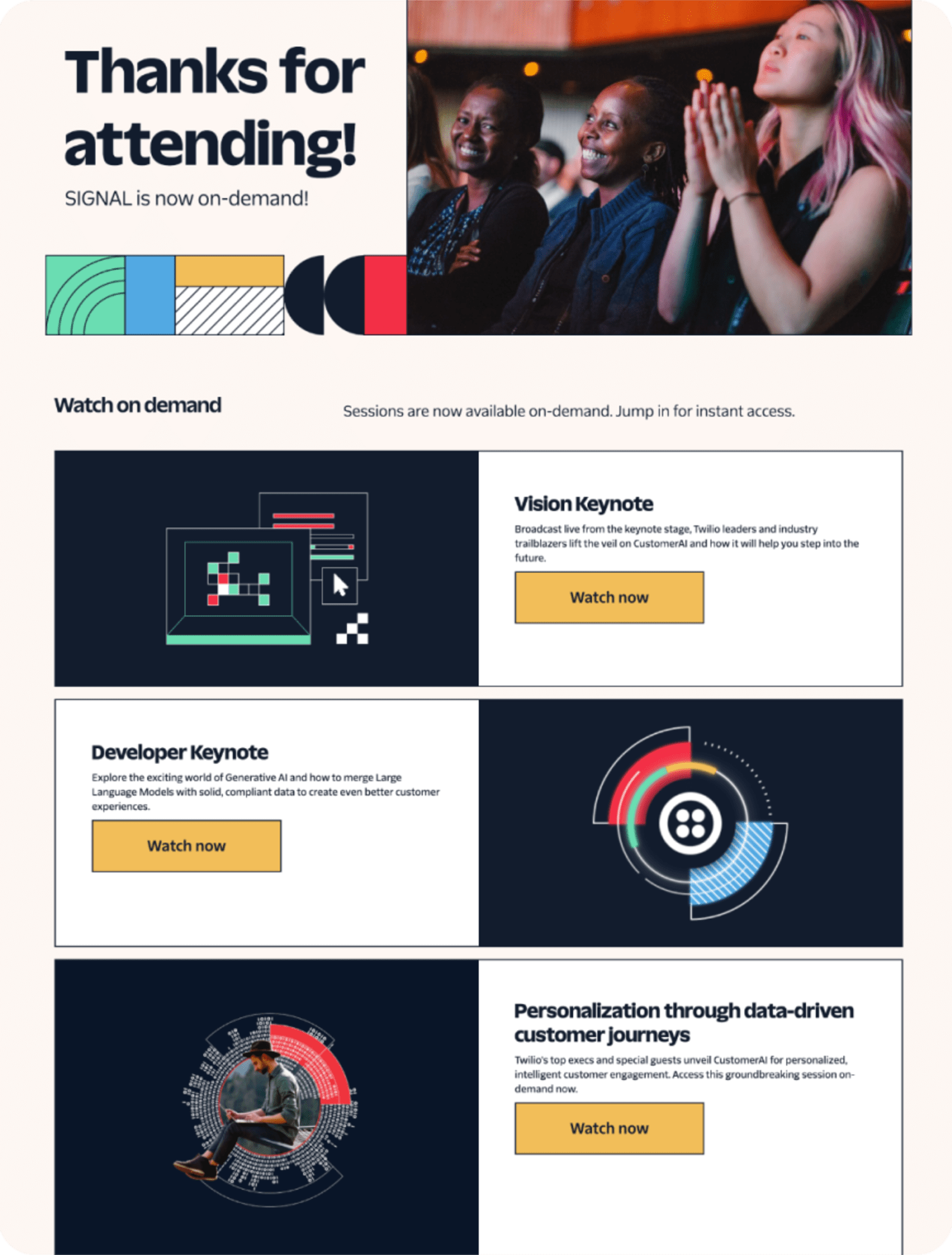
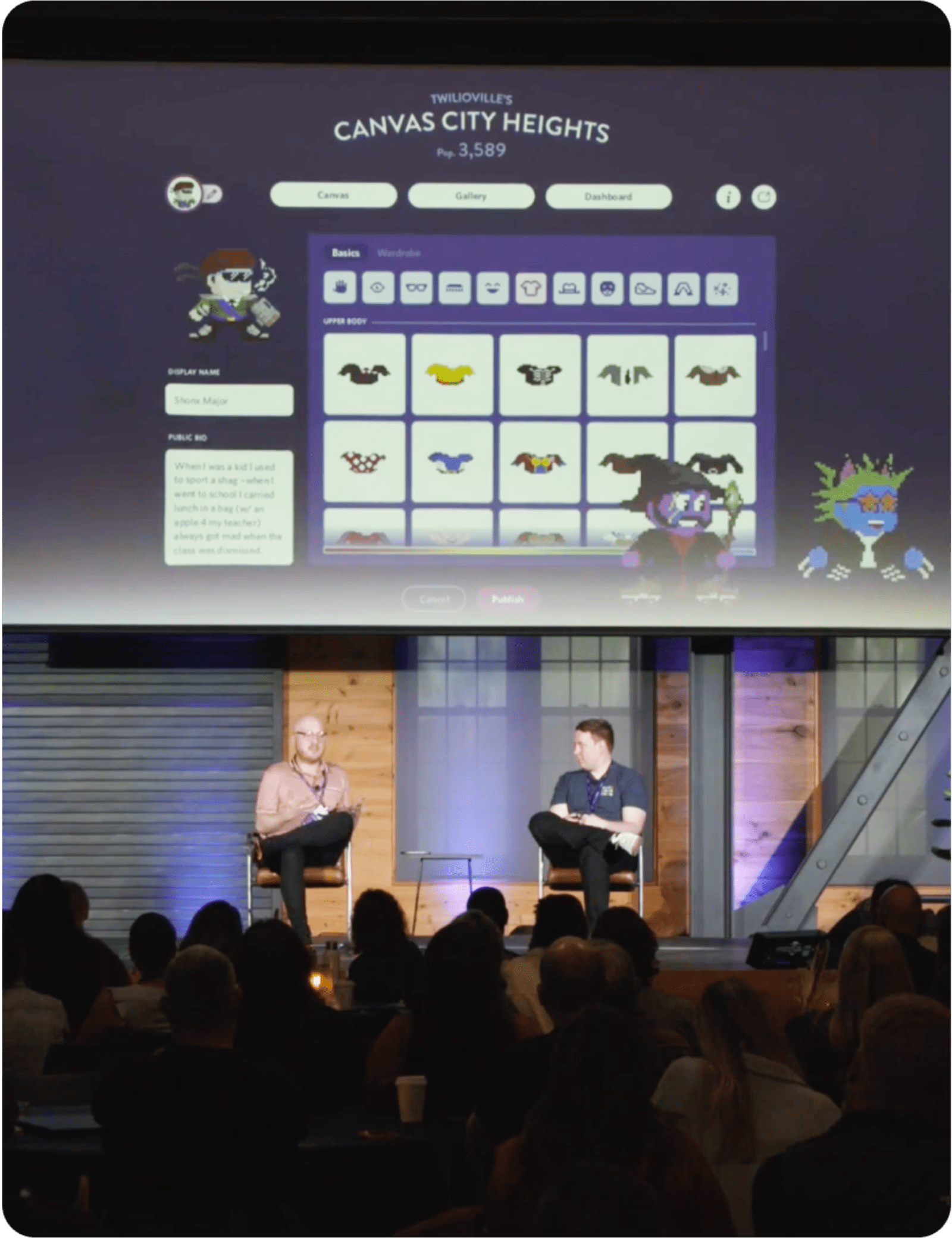
From the moment guests checked in, their avatars would pop up on the screen. Then they’d follow them through the experience. It became a part of their identity. Since it went so well at the live event, Twilio then brought these avatars into their virtual events. When someone’s excited about a particular session, they can express that through their avatar emoting.
Rakuten throws some of the best events in the affiliate industry, and they’re not afraid to surprise and delight guests. That’s why Kayla Maley, the company’s Senior Event Manager, once turned an exhibit hall into a huge pool party. “I’m very resistant to doing that type of event in your standard, blank conference room,” she shared. Plus, she wanted to ensure a lot of people would show up, given how many sponsors were supporting that portion of the event.
Of course, with untraditional meeting spaces, you have to think more about potential challenges, which is why you want to give yourself lots of runway. You also need to communicate well in advance with both sponsors and venue staff about their rules and guidelines (No swimming after your fourth drink!)
For the pool party, Kayla had to consider lots of things she hadn’t thought about before: was the swag the sponsors planned to send safe to have near water? How would they get power sources nearby? How would the weather be, and how might that affect any tech or equipment? Still, with proper prep, she says making the effort to be creative is worth it: “It keeps it exciting.”
Your vendors have a perspective that your own team might not, so you can lean on them in the ideation process. A good relationship with your event management platform can go far beyond getting set up with a website or registration page, which is why it’s crucial to choose one that not only has the technical capabilities you’re looking for but can also be an extension of your team. It shouldn’t be merely a transactional relationship but a collaborative one.
Once you’ve chosen this partner, include the account manager and/or customer success manager early on in the brainstorming process to help you come up with ideas that are both innovative and realistic. They have a broad view of the event landscape and may even work with similar organizations, so they can help you think of unique, new ideas. They can also help you understand what’s possible technologically.

Event management platforms make it possible to collect and leverage tons of Super Helpful Data™ (not a real trademark but definitely should be) about your attendees. But to collect and parse that data, you have to spend time building data collection systems before the event starts.
Your priority data will depend on your event’s goals (if you haven’t defined goals yet, check out the tips we provide here). Not every event can serve every purpose—a ticketed event with the primary goal of bringing in revenue might not generate as many leads as a free networking lunch. Therefore, prioritization is crucial.
Once you have the event’s goal(s) defined, it’s time to think about what data points you need to measure success.
Setting clear Key Performance Indicators (KPIs) is the best way to ensure you track the right data before, during, and after your event. If you’re not sure where to start, some good KPIs for events are:
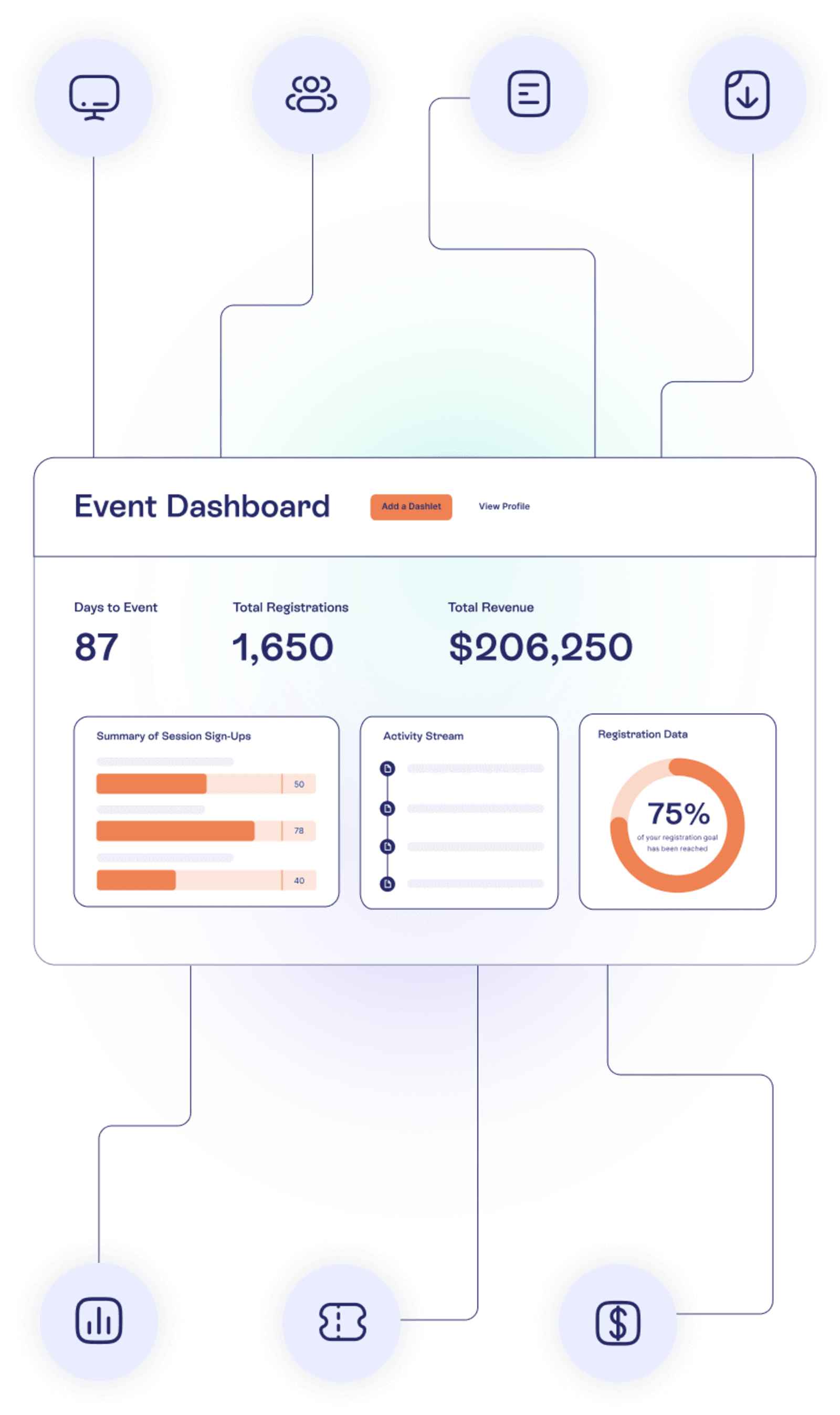
Revenue metrics: Ticket sales, sponsorship revenue, or the number of sales made as a result of the event
Engagement metrics: content downloads, newsletter signups, and visits to your website or on-demand content (especially if your event is virtual)
While some metrics are straightforward, others might require a bit more creativity to measure. For example, if you want to measure the success of networking, as Rakuten does for their DealMaker global event series, you could look at:
The team behind DealMaker USA tracked more than 3,800 scheduled meetings, making it easy for them to show the value of the events.
The next step is to collect the actual data points that roll up to your KPIs. Some types of data to consider collecting are:
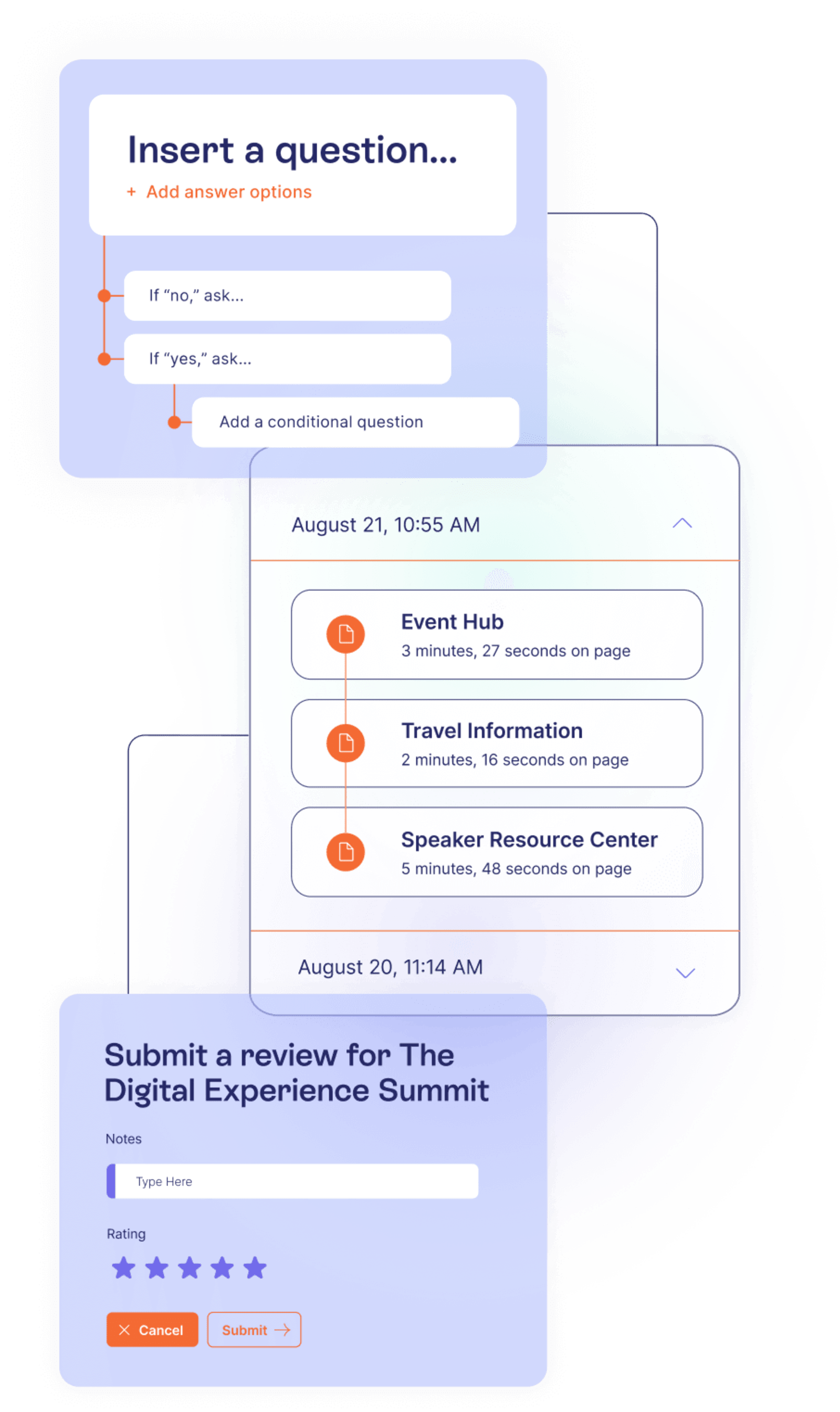
Registration data
Event activity data
Post-event surveys that ask questions
Pre-event, you’ll want to set up integrations and reports in your event management software that allow you to start collecting this data ASAP. That means:
Swoogo Analytics collects real-time data that can then be funneled into your martech stack and built into real-time reporting. Spend time on the pre-event set up and you’ll basically have a data collection system that can bench press like Arnie.
Remember when Beyonce made her entrance to the 2003 VMAs hanging upside down, on wires, in a pair of sequinned chaps? That’s the Queen Bey energy your event registration page needs to channel.
The registration experience is your event’s first impression and sets the tone for the event. We’ve all seen bare-bones registration pages with little-to-no design, and while these may technically get the job done, they’re not doing the host any favors.
A polished, well-designed page that aligns with your overall branding sends the message that your event—and, by extension, your company—is professional, legitimate, and cares about details (the Beyonce-style sequin chaps are optional, obvs).
Rakuten is a good example to follow. Aiming to connect publishers with advertisers, they ask registrants which group they identify with and put that info into the in-app directory. That way, guests can filter for people who are relevant to them.
In the future, Rakuten plans to customize even more, adding fields for content creators’ areas of interest, like fitness or food, so they can connect with the brands most relevant to them.
Pro-tip: Use your registration page to gather valuable information that can be leveraged during the actual event. For example, your sales team might want to use job title data from registration to plan their in-event networking and outreach. We go into greater depth on supporting sales teams below, but just remember that thinking strategically about data collection during the pre-event planning will allow you to collect the right data at the right time.
If supporting sales is an event goal, as it often is, think about every piece of data you could gather from guests to help close deals. Getting names and job titles is the bare minimum, but there’s so much more you can do.
If you use Swoogo for your registration page, you can feed data about attendees directly into tools like Salesforce, Marketo, Hubspot, and Campaign Monitor. These products all integrate with Swoogo, which has a robust open API. This saves our customers time since they’re not having to create their own integrations.
You don’t have to wait until after an event to use the data you’re gathering. It can be used at the event itself to support sales.
Stephanie Pennell, the Director of Marketing Events at ZoomInfo, has a tight strategy for this. Before an event, her team looks at which clients and prospects are going to attend. Then, they provide info about these people to specific ZoomInfo representatives, especially executives, who are going to be on site. They give reps a briefing document that overviews where the customer stands now, addressing questions such as: Is there an opportunity for upsell? Is there an open pipeline?
At the event, her team “herds pigeons”, reminding reps who they have an interest in meeting and talking to. It helps drive their targeted outreach, especially for smaller events and makes it easier for execs to book a follow-up meeting or lunch with a customer post-event.
How you communicate with potential attendees—through your event website, emails, social channels, and community groups like Slack—is key to building anticipation and conveying information clearly before an event.
Leave ample time to build any pages or apps for your event so you can make it available to attendees well before the event itself. To figure out the right timeline, we can use our trusty ‘Tier 1, 2 or 3’ framework:
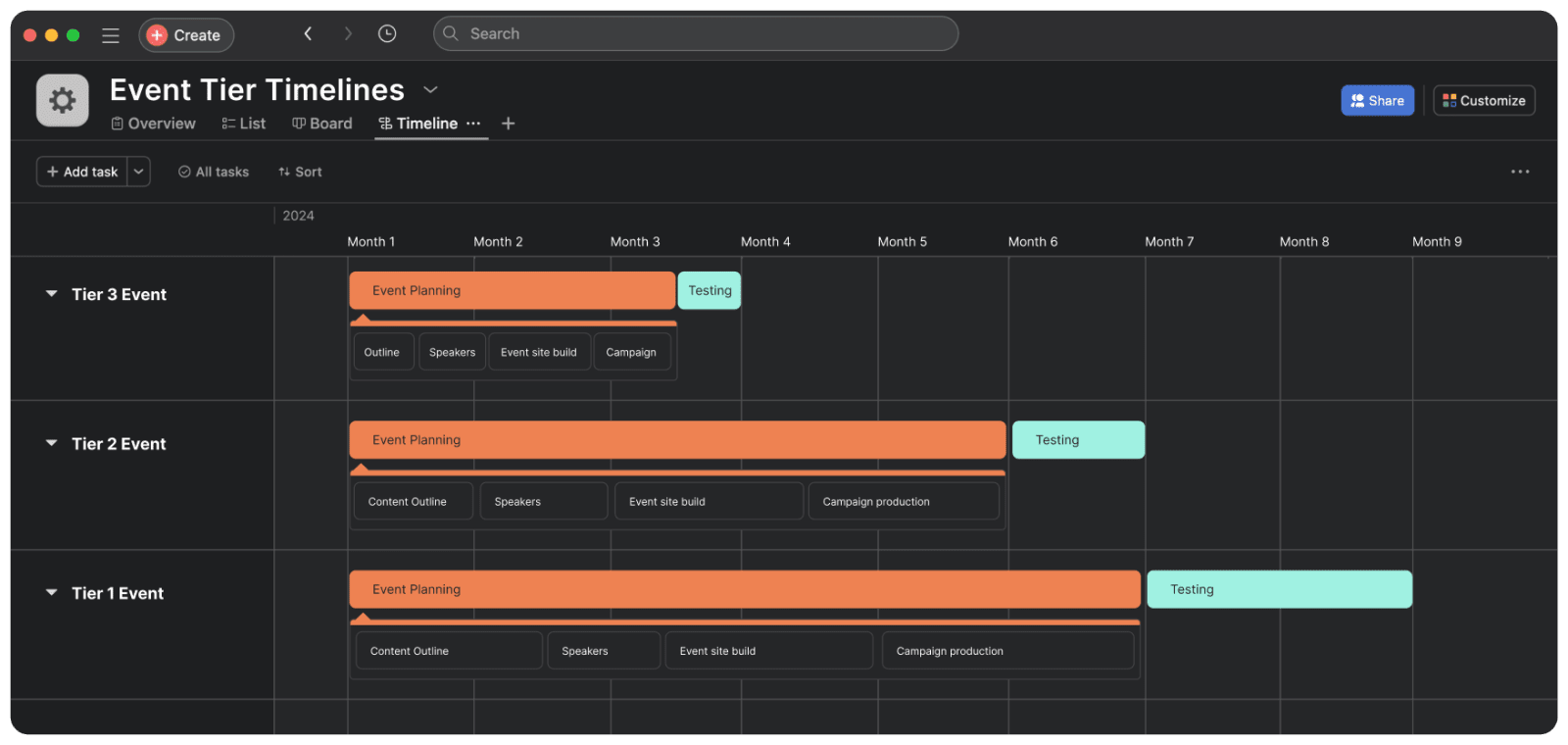
Of course, we don’t always have 3 months to plan a small event (if only!), but Future You—and the marketing team—will thank you for being as prepared as possible when it comes to the event site and marketing materials.
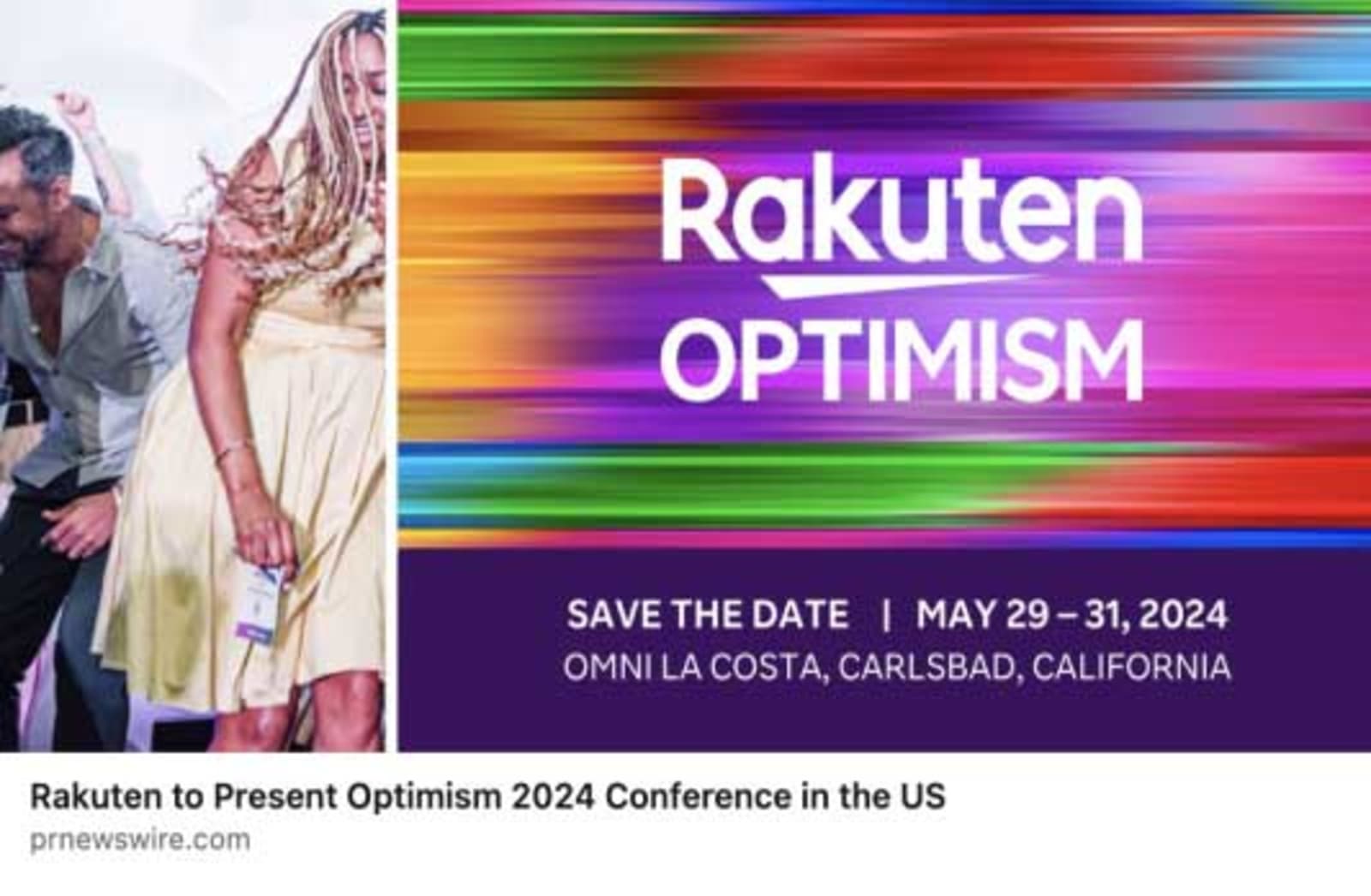
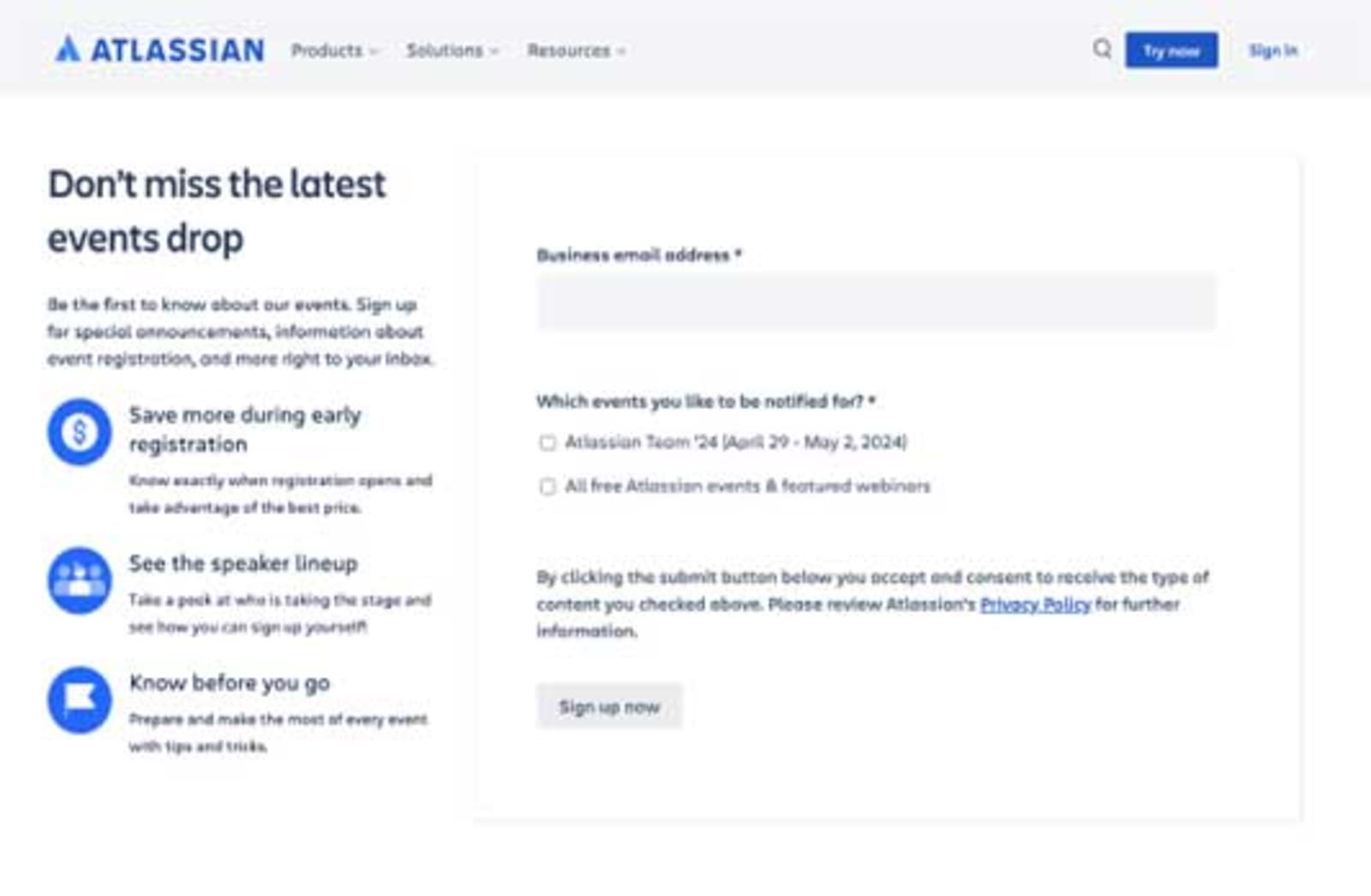
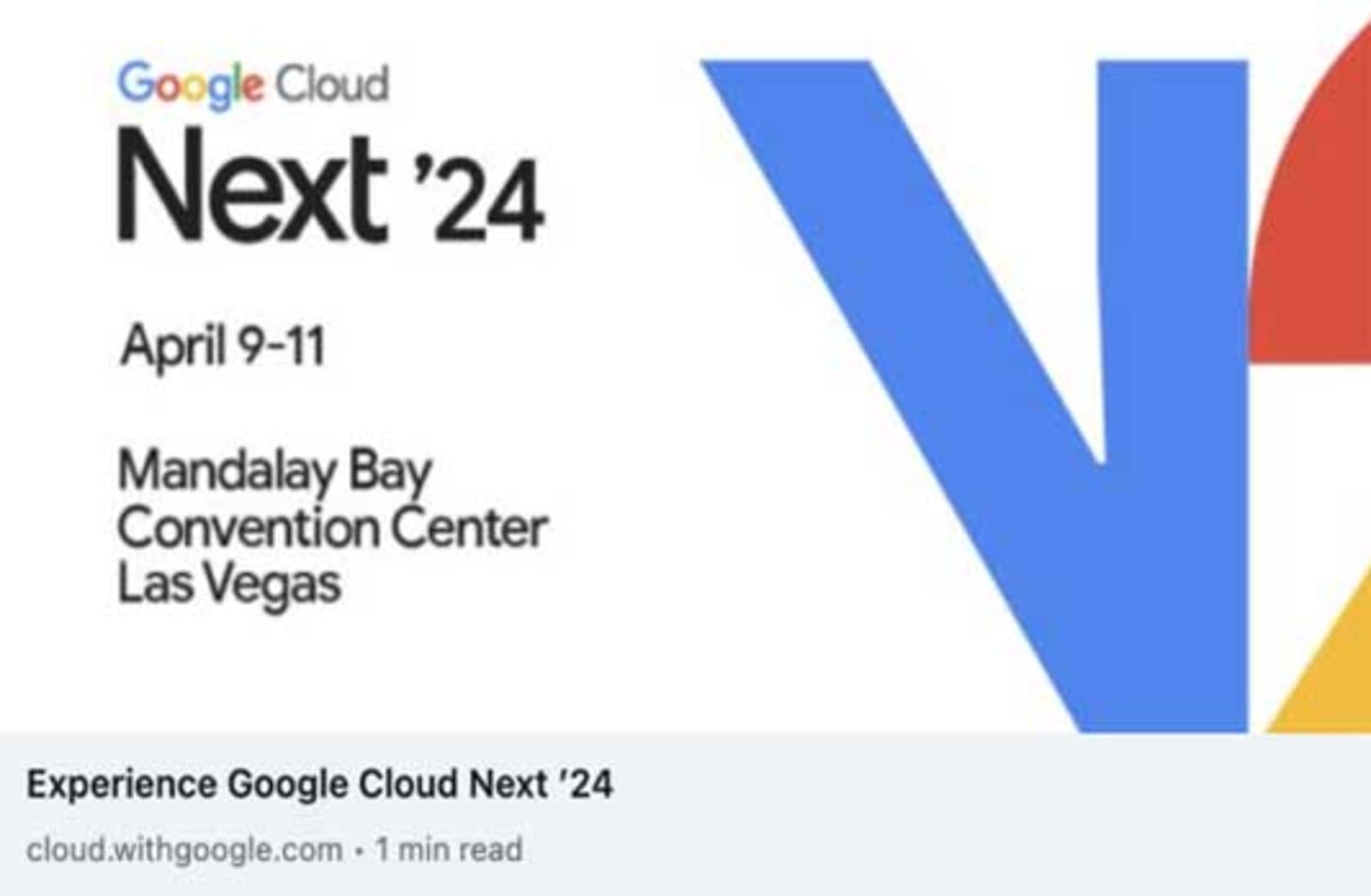
In the months leading up to the event, start getting the word out through email and any other channels where your target attendees are, such as LinkedIn, online communities, or forums.
About a month out from the event, send an email to registrants. Encourage them to log in, set up a profile, and start using features. Your aim is to build anticipation about the programming and to make the detailed event agenda easy to view at least several weeks, if not months, in advance.
Even if some aspects of the events are open-ended, like a Q&A, demo, Ask Me Anything with an expert, or networking booths/tables, build those into the agenda and give people ways to plan for and get excited about them in advance.
For example, for one of Twilio’s events the team created live product booths that were kind of open-ended. They then realized that it’d be better if the events were actually on the agenda in advance. “We were able to capture a lot of great quality leads for our sales team through those interactions”, Twilio’s Alexander St. John said.
In the weeks leading up to the event, encourage guests to do the following:
Upload their photo and profile to a directory. Giving attendees the opportunity to learn about each other in advance is incredibly valuable. Just keep in mind you have to give people clear reasons to join the directory and remind them more than once. At Rakuten, they build their app so that when a user opts out of the directory, red flags go off letting the user know what that will prevent them from being able to do.
Start scheduling meetings. You can include a drop-down menu in your app, allowing people to easily choose a meeting spot. Another idea might be to create “huddle rooms” for networking that people can sign up for in advance. Consider getting the rooms or tables sponsored to help pay for them, offering light branding opportunities such as signage, swag, and conversation topics aligned with their brand.
Message and interact with each other. You could enable people to search for other attendees by role, company, even topics of interest, and to message each other before the event. That will give them a headstart in finding the people they want to meet most.
Finally, advertise all of these features to attendees in various formats, including mass email, in-app, on your website, and through direct emails from customer-facing reps to prospects and clients.
It’s never too early to consider your post-event plan. This should include: